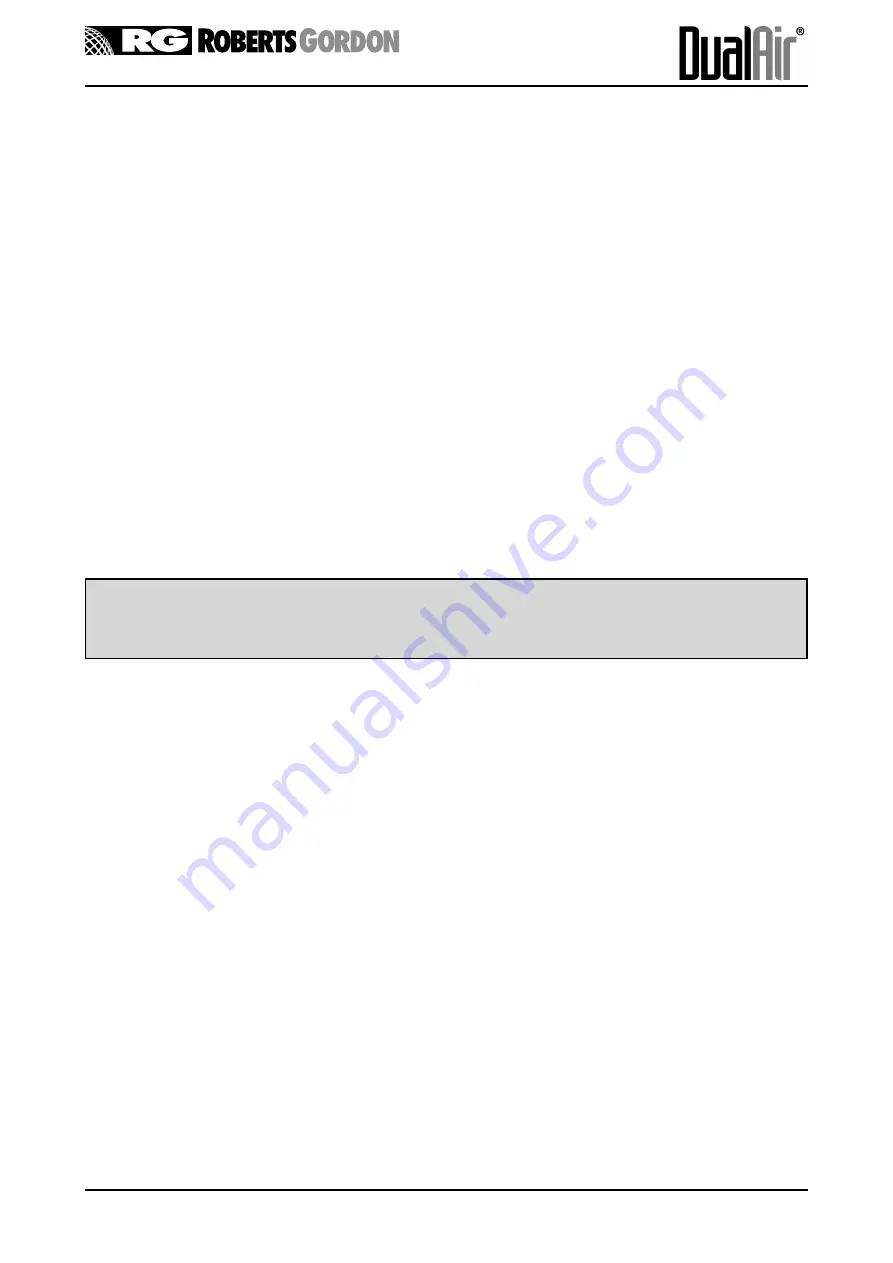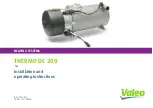
Page 47
7.6.1
Main Fan Motor
Disconnect electrical connections at contactor/overloads which are in the controls compartment (see
Fig. 2.4).
WARNING: THE MOTOR IS HEAVY
Remove the fan compartment access panel to gain access to the motor.
Unscrew the bolts securing the motor to the mounting bracket. The motor will now lift out.
To refit: reverse the above procedure, adjusting the tension of the belts as in 6.1 and ensuring that
the pulleys are properly aligned, i.e. the belts should be exactly parallel to the fan case.
Check that the rotation of the fan under power is counter clockwise when viewed from the access
panel side (see Fig 1.1).
7.6.2
To Remove the Fan(s)
Remove the fan access panel and the belts from the belt drive.
Remove the screws securing the fan feet to the base of the fan compartment and also the ones
securing the fan outlet flange to the fan plate.
Remove the fan /motor assembly from the compartment
WARNING
The motor is mounted at the top of the fan and so the assembly will be top heavy.
It may be easier to handle if the motor is removed from the fan first.
Take care not to damage the thermal insulation in the fan compartment any damage must be properly
repaired or the insulation replaced to prevent insulation fibres from distributing in the air steam and
condensation forming on the cabinet.
7.6.2
To Refit the Fan(s)
To reassemble reverse the above ensuring that the correct motor connections are used as identified
when disconnecting.
7.6.3
Main Fan Starter and Thermal Overload Unit
This assembly comprises two parts, ‘A’ the Contactor, and ‘B’ the Overloads, (see Fig. 2.4), which
may be changed separately.
‘B’ - The overloads are fixed only by the 3 load connections at the lower end of the contactor.
To remove: Unscrew the motor connecting wires from their terminals at the bottom of the assembly
(note the colour code).
Disconnect the overload circuit connections near the overload reset button.
Summary of Contents for Dualair DA260G Series
Page 2: ...Details of condense drain for cooling coil ...
Page 9: ...Page 7 Fig 2 2 DualAir 380 Module Dimensions FRONT VIEW REAR VIEW SIDE VIEW ...
Page 34: ...Page 32 Fig 5 2 Wiring for DualAir Units On Off Burner 24v Controls ...
Page 35: ...Page 33 Fig 5 3 Wiring for DualAir Units Hi Low Burner 230v Controls ...
Page 36: ...Page 34 Fig 5 4 Wiring for DualAir Units Hi Low Burner 24v Controls ...
Page 37: ...Page 35 Fig 5 6 Wiring for DualAir Units BMS Burner Modulation 230v Controls ...
Page 38: ...Page 36 Fig 5 7 Wiring for DualAir Units BMS Burner Modulation 24v Controls ...
Page 39: ...Page 37 Fig 5 7 Wiring for DualAir Units Full Burner Modulation 230v Controls ...
Page 40: ...Page 38 Fig 5 8 Wiring for DualAir Units Full Burner Modulation 24v Controls ...
Page 41: ......
Page 42: ......
Page 43: ......
Page 44: ......
Page 45: ......
Page 46: ......
Page 47: ......
Page 48: ......
Page 49: ......
Page 50: ......
















































